There’s nothing more refreshing on a hot day than a glass of cool, crystal-clear water. But when your water contains black sediment, it’s far from appealing. You’re probably wondering what these black particles are, whether they’re safe to drink – and how to get rid of them.
In this guide, we’ve shared the 8 most common causes of black sediment in well water. We’ve also shared our top 5 tried-and-tested ways to get rid of black particles from your drinking water.
Things You Need to Know
- Black sediment in well water is most commonly caused by minerals, soil or mud, or organic matter.
- You can treat black sediment by installing a water treatment system or (if necessary) getting your well repaired.
Table of Contents
- 📝 Top 8 Causes of Black Sediment in Well Water
- 📖 How to Find Out What’s Causing Black Sediment In Your Water
- 📤 How to Get Rid of Black Sediment in Well Water
- 🧱 Fix Your Well
- 🧰 Fix Your Septic System Or Replace Old Rubber Hoses
- 🔂 Use a Sediment Filter
- 🔧 Install an Iron Filter
- 🚿 Use a Water Softener
- 📑 Takeaway
📝 Top 8 Causes of Black Sediment in Well Water
The top causes of black particles in your well water are:
Mineral Deposits
Iron and manganese are two minerals that are known to cause dark staining on your plumbing, fixtures, and appliances. These minerals may give your water a brown or black tinge that has the appearance of black sediment.
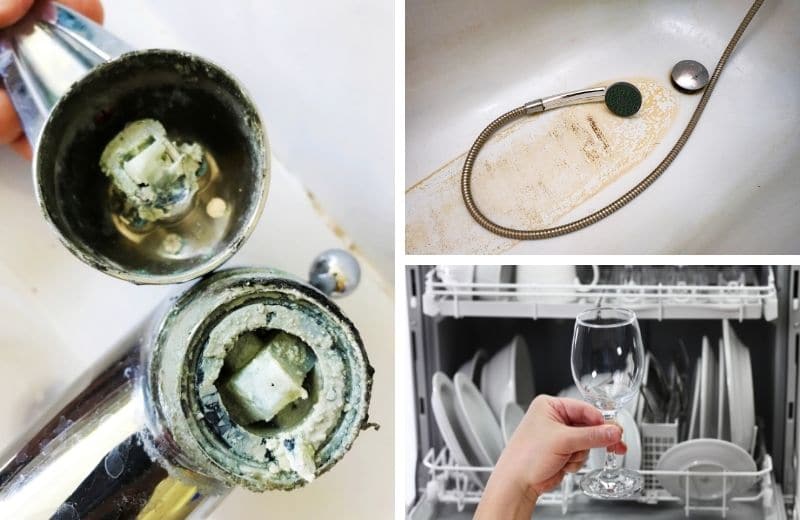
Both iron and manganese are naturally occurring in rocks and earth. These minerals are essential to human health, but in large quantities, they give water an unpleasant metallic taste and leave unpleasant debris on surfaces.
Another mineral that may cause dark staining in your water is calcium – especially if it’s combined with manganese or iron. Calcium contributes to water hardness and leaves chalky gray deposits known as scale. Calcium is another mineral that’s naturally present in rocks and is essential for human health, but has damaging effects around your home.
Soil or Mud
Soil or mud are found at the bottom of well aquifers located near muddy areas or rivers. Particles of mud or soil from the aquifer could naturally seep into your well water. Alternatively, your well pump could be positioned too close to the bottom of the aquifer, causing it to draw mud or soil into your water supply.
Soil and mud don’t tend to be harmful in drinking water, but they give water a murky, black or brown tinge.
You can learn more about how to filter muddy well water in our ultimate guide.
Silt or Sand
Silt and sand may range in color from pale brown to black. These particles are usually dislodged from soil and rocks as water flows over them, and end up sinking to the bottom of your well.
If your well has a very powerful pump, or the pump is positioned too close to the bottom of the aquifer, you’re more likely to have black sand or silt in your water.
While sand and silt are usually harmless in tap water, they may affect your water quality, damage your plumbing system, or give your water an unpleasant texture.
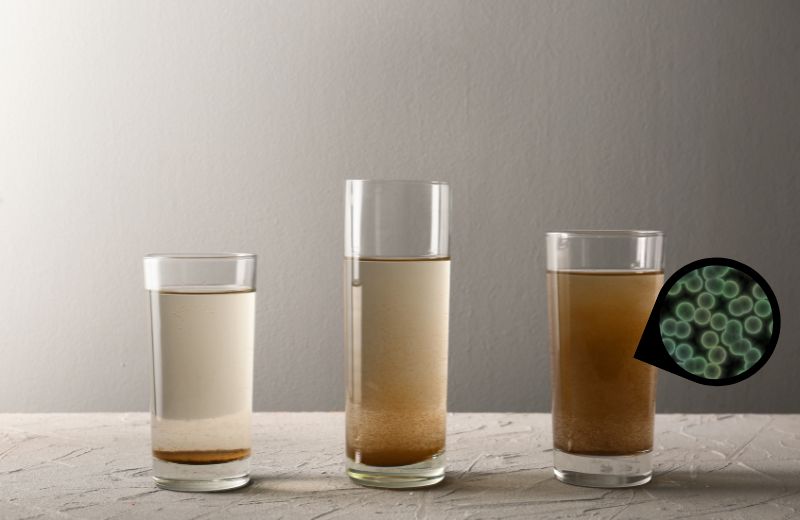
Organic Matter
Another material that ends up at the bottom of your well is organic matter. When decaying plant matter and insects gradually decompose inside your well, they’ll release black debris into the water. Decomposing organic matter also gives water an unpleasant earthy odor and produces stringy buildup inside the well pump basket.
If black sediment particles in your water are caused by organic matter, the problem will continue to get worse until the well’s pump or your home’s water feed pipe becomes clogged.
A New Well
Just installed a new well? Luckily for you, your sediment problem is likely to be temporary. It’s normal for sediment, sand, and clay particles to enter your water supply from a new well that has just been installed.
The drilling process typically stirs up sediment and minerals in the ground, causing them to be drawn into the well water system. However, this issue should only last for a few weeks. Once the ground settles around the well, you shouldn’t notice any sediment or black stuff in your water.
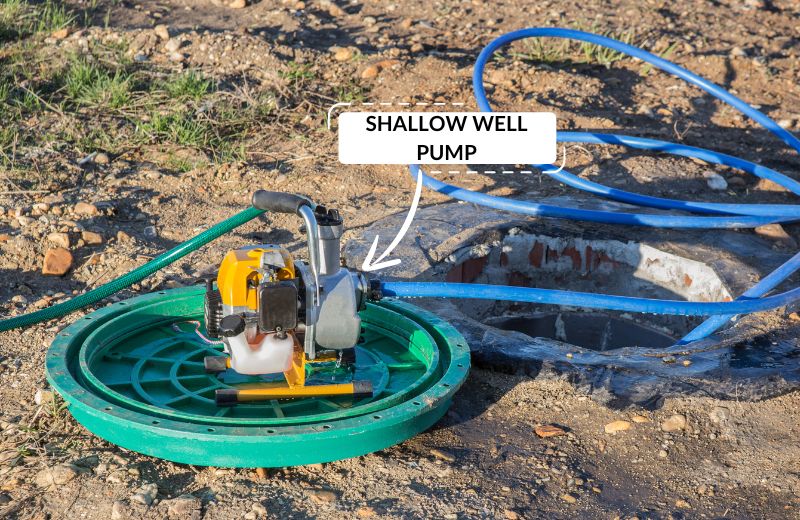
A Cracked or Collapsed Well
If you have an old well that’s damaged or collapsed, this is likely to be the cause of sediment-rich or muddy water. Heavy rain, earthquakes, or simply decades of degradation could cause your well casing or screen to become damaged or collapse.
A local well contractor can conduct a survey of your well and look for signs of degradation. If your well has collapsed, you’ll need to act immediately and arrange repairs as soon as possible.
Sewage
Perhaps the least pleasant cause of black-tinged water is sewage. If your well is located near a septic system or an agricultural site, it’s at risk of sewage contamination.
A damaged or backed-up septic system could cause animal or human waste to leak into the soil surrounding your well. Since animal and human waste both contain harmful bacteria, you’ll need to remedy a problem with your septic system as soon as possible.
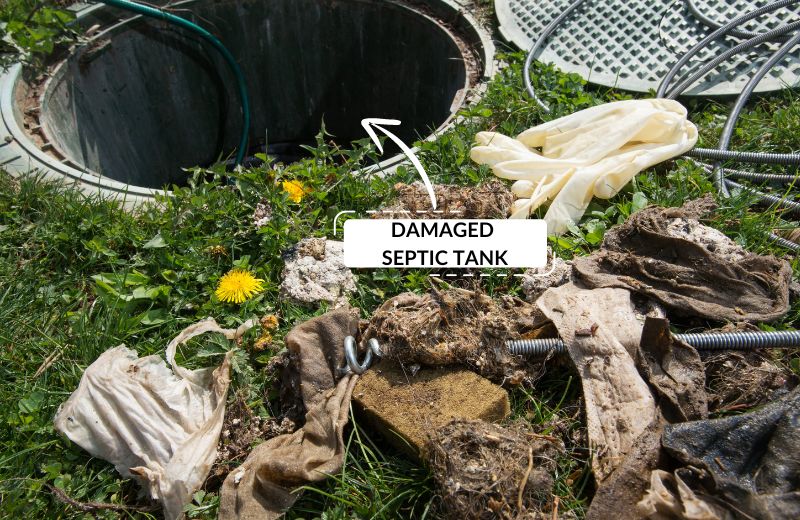
Rubber From Appliances
Finally, the black specks in your well water might not be coming from your water source, but from your appliances or plumbing system.
Your hot water heater may use rubber pipes, which erode or decompose over time, leaching black stuff into your water. Or, some of your appliances may use a rubber hose, seal, and gasket, which could also degrade and leach into your water.
There’s no way to prevent the rubber in your water heaters and other appliances from decomposing, aside from replacing the appliance or rubber components.
📖 How to Find Out What’s Causing Black Sediment In Your Water
If you want to know the cause of black sediment in your water, you have two options: conduct a water test and/or get your well inspected.
Test Your Water
The highest likelihood is that the black stuff in your water is a certain particle or contaminant. So, to find out what your water contains – and therefore how to treat your water – you’ll need to get your water tested.
Since you can only guess at the cause of your black water, we recommend buying an extensive well water test that covers a range of likely well water contaminants, like the test kits offered by Simple Lab Tap Score.
In this case, a private laboratory test is better than an at-home test. Laboratory tests are more thorough and accurate, so you can use them to find out the exact cause (or multiple causes) of black specks in your water.
The Environmental Protection Agency (EPA) recommends testing your well water at least once a year, even if there’s no noticeable change to your water quality.
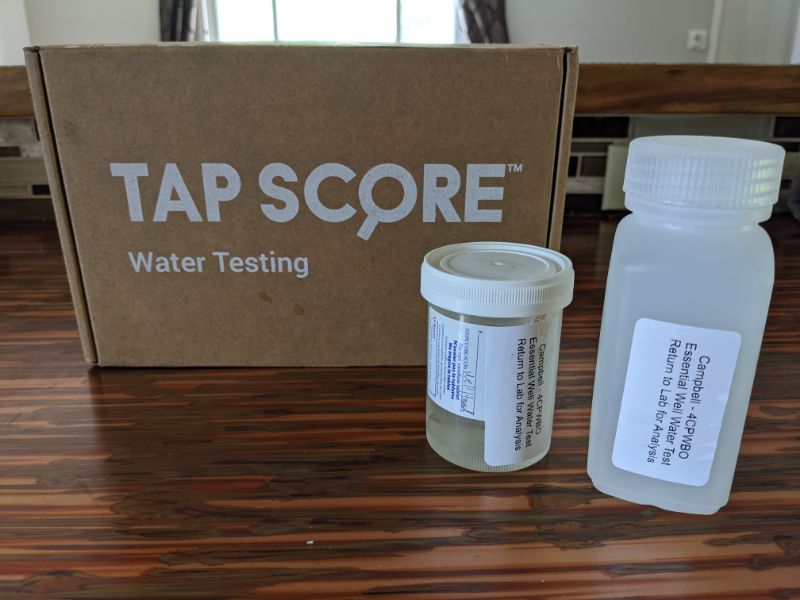
Get Your Well Inspected
If tap water testing doesn’t bring up any obvious causes of dark-colored particles, your second step is to get your well inspected. A well inspection should, of course, be your first port of call if you have a reason to believe that your well might be damaged.
A well contractor can send a camera into your well to inspect the well casing, pump, and screen. If any damage or degradation is found, the inspector can advise on how to remedy the issue – or recommend urgent treatment.
📤 How to Get Rid of Black Sediment in Well Water
Luckily, getting rid of black sediment in well water is easy, as long as you know what problem you’re dealing with.
We’ve shared some of the best ways to get rid of black specks in water below.
🧱 Fix Your Well
First thing’s first, if your sediment issue is being caused by a problem in your well, you need to fix this problem.
For instance, if your well pump is drawing sand or mud from the bottom of the aquifer because it’s too powerful or too close to the well base, a well contractor can raise the pump or look at ways to reduce its power. If your well screen is damaged or degraded, replacing the screen will resolve the issue.
If your well isn’t properly drilled or part of the well has collapsed, you may need more extensive work to re-drill or replace the well with a new system.
🧰 Fix Your Septic System Or Replace Old Rubber Hoses
If your dirty water is caused by a damaged septic system, your top priority is to fix your septic system. Hire a professional to thoroughly pump and clean the tank, and don’t use your well water until test results show you that no bacteria is present.
If old rubber hoses or water pipes are leaching black bits into your water, replace the hoses or pipes to prevent this issue from continuing.
🔂 Use a Sediment Filter
A sediment filter is one of the best ways to target sand, silt, dirt, and highly concentrated rust, which are all common causes of black-tinged drinking water.
Sediment filters can be installed downstream of your well pressure tank to filter your water before it enters your home’s plumbing system. Some filters are standalone systems, while others are installed as pre-filters to larger water systems.
As water passes through the filter, it traps contaminants either in a media or a dirt chamber. Some sediment filters have a valve that you can open to remove the trapped dirt, extending the lifespan of the filter.
Sediment filters are highly capable of removing the majority of large particles from water, eliminating issues with black sediments.
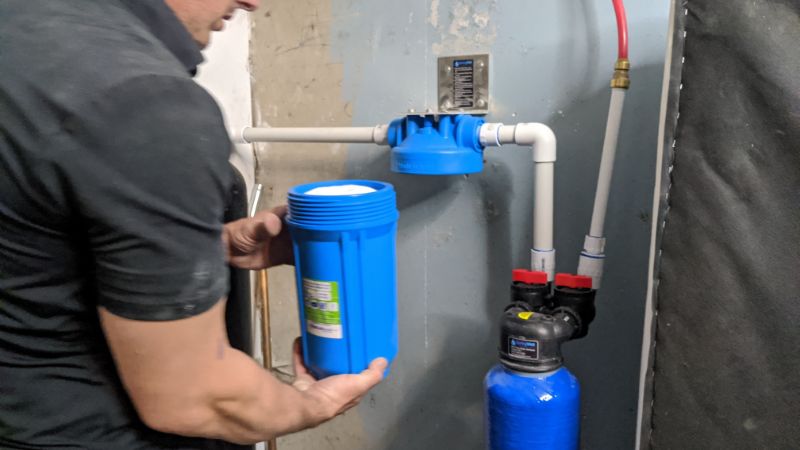
🔧 Install an Iron Filter
An iron filtration system is the best defense against black sediment caused by iron oxide in your water column.
There are several types of iron filters, but the most effective systems for well water are air injection oxidation systems. These units inject air into well water, which oxidizes iron, manganese, and hydrogen sulfide. These particles are trapped in a media bed, and clear, clean water flows out of the system.
Most AIO systems can remove about 10 PPM of iron and manganese, and about 5 PPM of hydrogen sulfide, from well water.
🚿 Use a Water Softener
If your black water is caused, in part, by calcium and other minerals, you can resolve the hard water issue by installing a water softener.
Water softeners use a process known as ion exchange to replace calcium and magnesium with trace amounts of sodium. If your tap water is black, installing a water softener should significantly improve this problem by eliminating water hardness. Softeners can also remove trace levels of iron.
While calcium is an essential nutrient, it’s found in much higher quantities in many foods, so you don’t need to worry about removing it from your water.
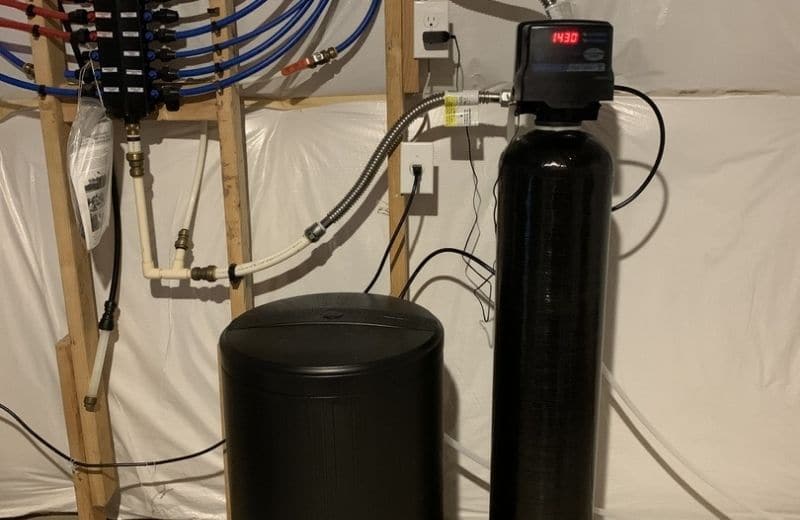
📑 Takeaway
Black sediments in a private well are commonly caused by minerals, sediment, organic particles, sewage, or issues with the well construction. Repairing your well and using suitable water treatment solutions should remedy issues with black well water.

Wife inherited her parents property with well water. We moved to the property 2years ago and I put in a PRO+AQUA Whole House Heavy Metals Well Water Filter system. Was working well until a developer dug a big pond a few hundred feet away from our well. This was happening because they had 2-3 dewater pumps running 24-7 for the pond construction. Even though they are done pumping we are still getting a massive amount of silt and sediment in our water clogging up our filters. I replaced the filters and washed them off several times and yet we are still having problems. I’m not sure if they damaged our water supply and thus damaged our water supply system. Not happy and thinking about going to the Water Management District and filling an official complaint. But in the meantime I need to know what to do.
How many and what micron rating sediment filters do you have installed?
My family had bought a pice of land and has developed it we put in a new water well in a little over a year ago now but have been constantly running it since because of the blackish water coming out but it only happens when we turn all the water off could it be settlement in the tank or drawing it up from the pump I don’t know if it was properly flushed out after installation
So you noticed elevated salinity in the water (brackish) when the water is first turned on? Or are you saying you notice visible sediment coming out?
We have all this filtration system installed, but water still coming out slightly black and have calcium ring deposited in toilet. Any suggestion ?
Have you had your water tested by a certified lab? If not, that’s where I would recommend to start. Check out Tap Score, hands down best lab testing service I’ve come accross.
Might be manganese, but hard to say without the testing data.
If you have had the water tested, please feel free to share the report with us at [email protected] and we can take a look and provide any insight!
Finally, what treatment equipment is currently installed?
I have all these filtration systems and my water was fine. I change the filter twice a year. Only one person in the house so not much usage. All of a sudden my bath is grey and leaves a grey ring around the tub instantly. I keep my gutters clean as they drain into the well. What would cause the water to be grey overnight?
Hi Sandra, great question! Have you had a read through this article? https://waterfilterguru.com/cloudy-well-water/
And overnight change would make me think it might be tiny air bubbles, but that wouldn’t leave a stain in your tub.